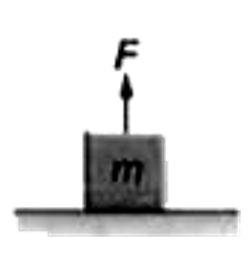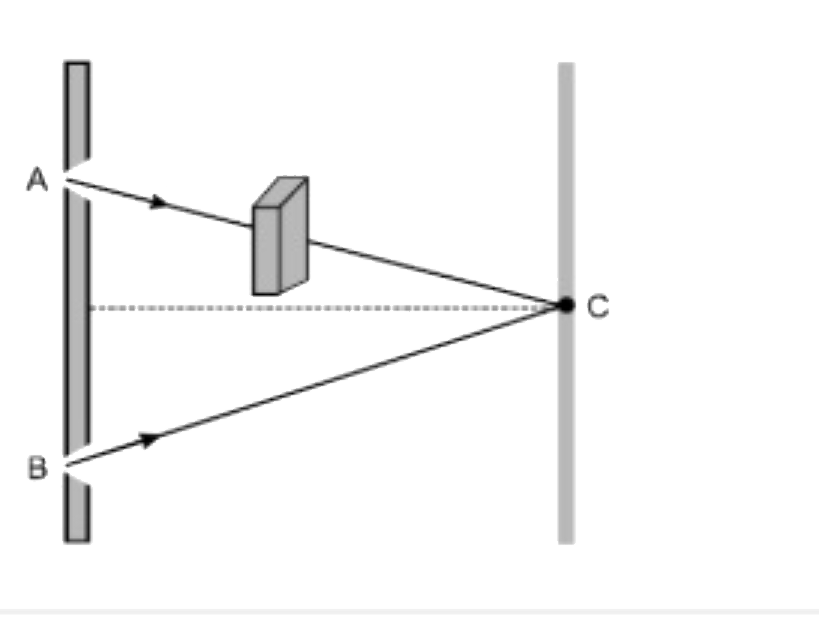A body of mass 10 kg is raised to a height of 10 m with an upward force of 196 N . Find the work done by the upward force and the work done against gravitation. Show that the total energy in this case is equal ot the work done by the upward force .
]Solution in Bengali
Work done by the upward force,
W = force displacement
Upward acceleration of the body in absence of gravity,
Effective upward acceleration ,
If the body starts from rest, and attains a velocity v at the height of 10m , then from ,
Kinetic energy of the body at this height,
Work done against gravitational force,
= force due to gravity displacement
= mass acceleration due to gravity displacement
This work done against gravitational pull gets stored as potential energy V of the body . Hence, V =980 J.
Total mechanical energy of the body at a height of 10 m
So, a part of the work done by the upward forces changes into kinetic energy of the body , and the other part transforms itself into the stored potential energy . thus , the total energy and work done by the upward force are equal.
Topper's Solved these Questions
- WORK AND ENERGYBOOK - CHHAYA PUBLICATIONCHAPTER - WORK AND ENERGYEXERCISE - SECTION RELATED QUESTIONS
24 Videos
- WORK AND ENERGYBOOK - CHHAYA PUBLICATIONCHAPTER - WORK AND ENERGYEXERCISE - HIGHER ORDER THINKING SKILL (HOTS) QUESTIONS
38 Videos
- WBCHSE QUESTION PAPER -2019BOOK - CHHAYA PUBLICATIONCHAPTER - WBCHSE QUESTION PAPER -2019EXERCISE - SECTION - II ( GROUP -D)
10 Videos
Similar Questions
Define work.
View SolutionA car is moving with a uniform velocity along a horizontal road. Does the engne of car do any work in this instance ?
View SolutionEquations of trajectory of a projectile are x=4 t, y=3t−5t2 , where x and y are in metre and t is in second . Find (i) maximum height attained by the projectille , (ii) horizontal range of the projectile .
View SolutionA body of mass 10 kg is dropped to the ground from a height of 10 metres. The work done by the gravitational force is (g=9.8m//sec^(2))
View Solution1 किग्रा द्रव्यमान का एक पिण्ड पृथ्वी तल से 10 मीटर/सेकण्ड चाल से फेका जाता है। पिण्ड की उर्ध्वाधर ऊपर की और गति में गुरुत्व बल द्वारा कृत कार्य ज्ञात कीजिये। g=10मीटर /सेकण्ड2।
View Solutionद्रव्यमान 20 g का एक कण ऊपर की ओर 10 m/s के वेग से फेंका गया है धरती के गुरुत्वाकर्षण बल द्वारा कण पर उस अवधि में सम्पादित कार्य निकालें जिससे वह ऊपर की ओर जा रहा होता है
View Solutionएक पिण्ड पर 10 किग्रा - भार एक बल लगाने पर उसमे बल की दिशा में 4 मीटर का विस्थापन होता है | इस प्रक्रिया में कृत कार्य ज्ञात कीजिए | (g=10 मी / से 2 )
View SolutionA ball of mass 0.3 kg thrown upwards reaches a maximum height of 5 m. Calculate the work done by the force of gravity during this vertical displacement considering the value of g = 10 m//s^(2) .
View SolutionApplying a force of F =196 N upwards, a body of mass 10 kg is raised up to a height of 10 m. Find the work done by the force F and the work done against gravity. Note that the work done by the force F is more than the gravitational potential energy . Show how the law of conservation of energy is still obeyed.
View Solution0.5కి. గ్రా. ద్రవ్యరాశి గల ఒక బంతిని పైకి విసిరినప్పుడు అది 5 మీ. ఎత్తుకు చేరుకుంది. బంతి పై దిశలో కదులుతున్నప్పుడు దానిపై గురుత్వాకర్షణ బలం వల్ల జరిగిన పని ఎంత? (g=10 మీ/సె^2)
View SolutionCalculate the work done by a force of 30 N in lifting load of 2g to a height of 10 m (g=10ms−2).
View Solutionएक 100g के कण को ऊर्ध्वाधर ऊपर की और 5 मी/से के वेग से फेंका जाता है तो गुरुत्वीय बल के कारण अधिकतम ऊँचाई तक पहुँचने में किया गया कार्य होगा
View Solutionm = 2 किग्रा का एक ब्लॉक F = 40 न्यूटन के उपरिमुखी बल से h = 2 मी ऊँचाई तक खिंचा जाता है | आरोपित बल F तथा इसके भार mg द्वारा ब्लॉक पर किया गया कार्य ज्ञात कीजिए | (g = 10 मी से−2)


View Solution100 g द्रव्यमान का कण ऊर्ध्व ऊपर की ओर 5 m/s की चाल से फेंका जाता है। ऊर्ध्व गमन के दौरान गुरूत्वीय बल द्वारा कण पर किया गया कार्य होगा
View Solutionएक 2 किग्रा द्रव्यमान के पिण्ड को 3 मी ऊँचाई से 5 मी की ऊँचाई तक ले जाने में गुरुत्व बल के विरुद्ध कार्य करना होगा | (यदि गुरुत्वीय त्वरण g = 10 मी/से2 हो)
View Solution
